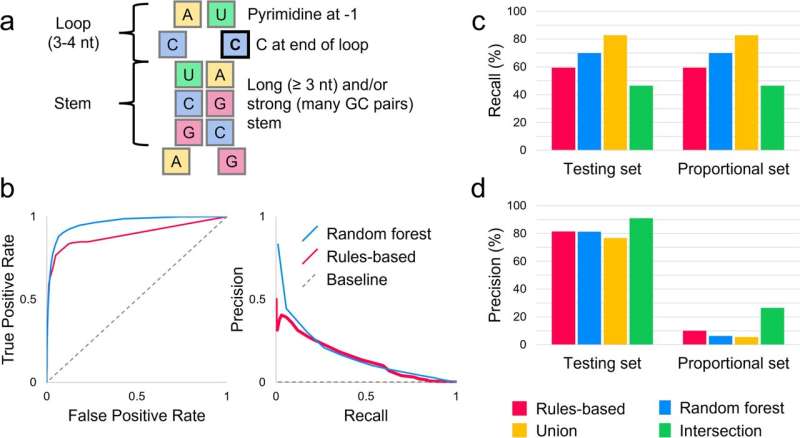This article has been reviewed according to Science X's editorial process and policies. Editors have highlighted the following attributes while ensuring the content's credibility:
fact-checked
peer-reviewed publication
trusted source
proofread
Researchers find RNA editing sites likely play a more significant role in genetic disease

New findings by University at Buffalo researchers reveal that RNA editing may play a larger role in human biology and in the development of human disease than has generally been understood.
In an article published in Communications Biology on May 4, the study's authors conclude that the work provides evidence for a more nuanced understanding of how molecular biology works, especially in terms of how proteins and genes respond to environmental challenges.
RNA editing sites cause changes in single nucleotide polymorphisms (SNPs)—the most common type of genetic variation in humans—in transcribed genes that can lead to the coding of different proteins. The expression of these different proteins may in turn be a factor in a broad range of human diseases.
Changing biology
"External phenomena can make changes in your biology to change how you respond to challenges you're facing, whether that's infectious disease or climate change," explains Peter L. Elkin, MD, corresponding author and professor and chair of the Department of Biomedical Informatics in the Jacobs School of Medicine and Biomedical Sciences at UB.
With these types of challenges, he continues, interferon gets upregulated, which stimulates the release of APOBEC enzymes, a family of enzymes that edit RNA.
The research focuses on this family of enzymes. Elkin's team found that 4.5% of SNPs that result in a specific type of change in DNA are probable sites for RNA editing. If this type of RNA editing occurs at even a fraction of these sites, the authors state, it could have meaningful effects on human health.
Previous work has shown some relation between APOBEC-mediated RNA editing and certain autoimmune and neurological diseases. Elkin adds that about 70% of genetic neurological diseases involve at least one RNA editing site.
"There are specific areas in the genome that we found are susceptible to these kinds of changes," he says, which suggests that RNA editing sites could therefore have a significant effect on genetic diseases.
The researchers were further intrigued when their collaborators at Roswell Park Comprehensive Cancer Center found RNA editing sites were involved in particular cancers.
"It began to occur to me that RNA editing sites could have a bigger role in disease than was previously thought," Elkin says.
RNAsee
To discover all RNA editing sites in the genome, the team developed a computational tool called RNAsee, which they validated with machine learning.
The tool revealed that 22.7% of the potential editing sites found by RNAsee were labeled as likely pathogenic or pathogenic, compared to only 9.2% labeled as likely benign or benign.
The authors write that this finding demonstrates that the type of RNA editing they studied "has a substantial possibility of negatively influencing human health."
"This work adds another dimension to our understanding of how our proteome develops," says Elkin, referring to the complete set of proteins that humans express.
The next step in the work, he adds, would be for researchers who are working on the genetics of specific diseases where RNA editing sites have been found to follow up on these findings.
"My hope is that researchers will follow up with basic experiments looking at genes of interest where we have found RNA editing sites," says Elkin.
More information: Melissa Van Norden et al, The implications of APOBEC3-mediated C-to-U RNA editing for human disease, Communications Biology (2024). DOI: 10.1038/s42003-024-06239-w
Journal information: Communications Biology
Provided by University at Buffalo



















